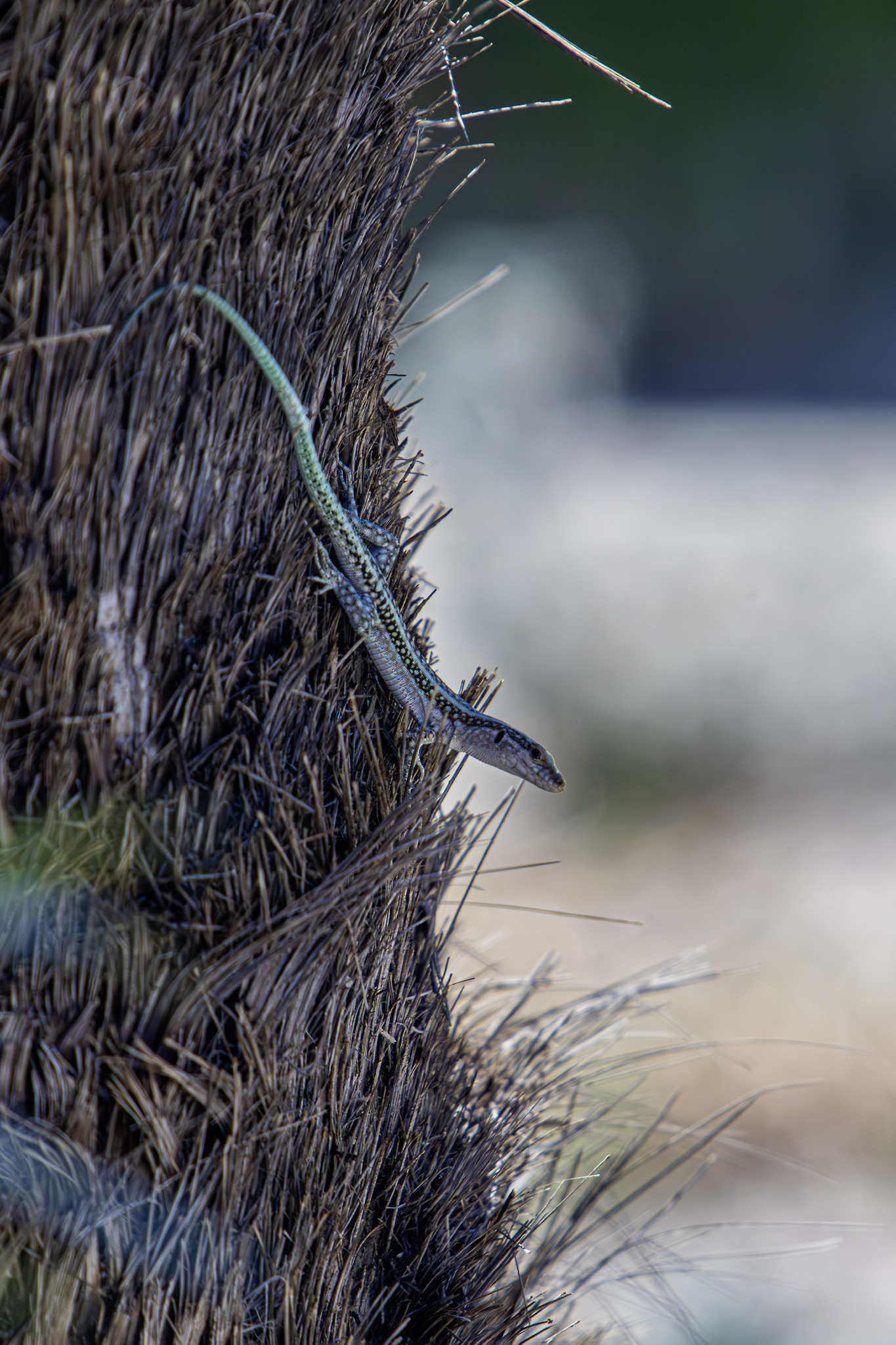The Anatolian Rock Lizard (Anatololacerta oertzeni) is a small to medium-sized lizard native to the rocky environments of southwestern Turkey and parts of Greece. Belonging to the family Lacertidae, this species is well-adapted to rugged, mountainous habitats, where it thrives among boulders and rocky outcrops. It is a member of the genus Anatololacerta, which includes species known for their agility and ability to navigate rocky terrain.
Physical Description:
- Size: The Anatolian Rock Lizard measures about 20 to 25 cm (7.9 to 9.8 inches) in total length, including its tail.
- Coloration:
- Dorsal side: The lizard typically has a greenish or brownish back, often with a series of black or dark spots that provide camouflage in its rocky surroundings.
- Ventral side: The belly is usually pale, ranging from white to light yellow, with some individuals showing orange or red hues, especially during the breeding season.
- Head: The head is proportionally large and often exhibits a brighter coloration, especially in males, which may show shades of green, blue, or yellow around the jaws and throat.
- Tail: The tail is long, slender, and somewhat tapering, usually accounting for more than half of the lizard’s total length. It may be slightly bluish or greyish and is important for balance and agility when navigating rocks.
Sexual Dimorphism:
Males are generally larger and more robust than females and often have more vibrant coloration, particularly during the breeding season when their throats may turn bright blue or green.
Behavior:
- Activity: The Anatolian Rock Lizard is diurnal, meaning it is active during the day, particularly in the morning and late afternoon when temperatures are moderate. It basks in the sun on rocks to regulate its body temperature and often seeks shelter in crevices when temperatures become too hot.
- Agility: It is an agile and fast-moving lizard, able to swiftly navigate rocky terrain. It often darts into cracks or under rocks when disturbed.
- Territoriality: Males are territorial and will defend their basking or feeding areas from other males, especially during the breeding season.
Habitat:
The Anatolian Rock Lizard is highly adapted to living in rocky environments and prefers areas such as:
- Rocky slopes: Found in mountainous or hilly regions with plenty of rock crevices, boulders, and cliffs.
- Scrubland: Often occurs in regions with low vegetation or Mediterranean-type scrubland, where it can hide among the rocks and shrubs.
- Forest edges: It may also be found at the edges of forests, especially in more open, sunny areas.
- Altitudinal Range: The lizard is typically found at elevations of up to 2,000 meters (6,560 feet), but it can occur in lower areas as well, depending on the availability of rocky habitats.
Diet:
The Anatolian Rock Lizard is primarily insectivorous, feeding on a variety of small invertebrates, including:
- Insects: Beetles, ants, grasshoppers, and flies make up the bulk of its diet.
- Spiders: It also preys on spiders and other arachnids.
- Occasional Plant Material: Though mainly carnivorous, it may occasionally consume plant material, such as flowers or leaves, particularly in times of food scarcity.
Reproduction:
- Breeding Season: The breeding season occurs in the spring and early summer, after the lizards emerge from hibernation.
- Courtship: Males engage in courtship displays to attract females, often involving head bobbing, vibrant color changes, and physical posturing.
- Eggs: After mating, females lay small clutches of 2 to 6 eggs, typically in moist soil or hidden among rocks. The eggs are incubated for several weeks before hatching.
- Hatchlings: The young are fully independent upon hatching and resemble miniature versions of the adults, although they are more vulnerable to predators.
Distribution:
The Anatolian Rock Lizard is found in:
- Southwestern Turkey: It is most commonly associated with the rocky terrains of the Anatolian Peninsula.
- Aegean Islands and parts of Greece: Some populations occur on nearby Greek islands, particularly those closest to Turkey.
Conservation Status:
The Anatolian Rock Lizard is currently listed as Least Concern on the IUCN Red List, indicating that it is not considered globally threatened. However, habitat destruction, particularly due to urban development and tourism in coastal regions, can pose localized threats. Conservation of rocky and natural habitats is important to maintain healthy populations of this species.
Interesting Facts:
- Adaptation to Rocky Environments: The species’ long tail and strong limbs are key adaptations that help it navigate the steep, uneven surfaces of its rocky habitats.
- Camouflage: Its speckled and muted coloration provides excellent camouflage against the rocks and boulders, making it difficult for predators and humans to spot.
Ecological Role:
As an insectivorous lizard, the Anatolian Rock Lizard plays an important role in controlling insect populations in its ecosystem. By preying on various insects and spiders, it helps maintain the ecological balance within its habitat. Additionally, it serves as prey for larger birds and mammals, contributing to the food web in the regions it inhabits.
Conclusion:
The Anatolian Rock Lizard (Anatololacerta oertzeni) is a fascinating and well-adapted species that thrives in the rocky landscapes of southwestern Turkey and surrounding areas. Its agility, striking coloration, and important role in the ecosystem make it a notable species in the regions where it is found. Though not currently at risk, ongoing habitat conservation is essential to ensure the continued survival of this resilient lizard species.
Views: 1184
Subscribe to the newsletter:
